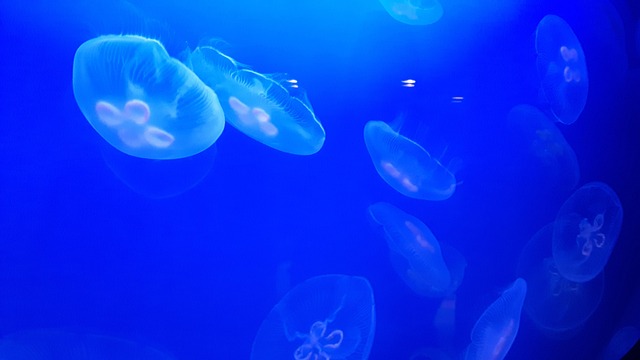Strategic lighting techniques, including LED strips and dimmable controllers, significantly enhance the visual appeal of artistic rockwork for fish tanks. By combining varying light intensities at different depths, aquascapers can create immersive underwater landscapes that highlight features, promote plant growth, and captivate viewers.
Aquascaping has evolved far beyond basic tank maintenance, now incorporating intricate artistic rockwork that demands specific lighting techniques. To achieve depth and dimension in your aquatic masterpiece, understanding light intensity and its interaction with tank depth is crucial. This article explores selecting the right lights for dramatic rock designs, leveraging LED strips to add layers of subtlety or boldness, and mastering spot lighting techniques to bring out hidden features and create a captivating underwater landscape.
Selecting Lighting for Artistic Rockwork Designs
When it comes to aquascaping, artistic rockwork designs can transform a simple aquarium into a captivating underwater landscape. To achieve depth and dimension in these intricate creations, selecting the right lighting is paramount. LED lights are particularly popular for their energy efficiency and ability to produce precise color outputs, allowing aquarists to highlight specific features or create dramatic contrasts.
For artistic rockwork for fish tanks, consider using high-intensity LED strips that can be strategically placed around the aquarium’s perimeter. These lights can mimic natural sunlight, casting vibrant reflections on the rocks while also providing adequate illumination for the aquatic inhabitants. Additionally, dimmable lighting controllers give you the flexibility to adjust light intensity, creating ambiance and enhancing the overall aesthetic appeal of your aquascaped tank.
Understanding Light Intensity and Fish Tank Depth
Aquascapers often strive to create striking depth and dimension in their aquatic masterpieces, and proper lighting is key to achieving this effect. When considering aquascaping lighting techniques, understanding light intensity and its relationship with fish tank depth is paramount. The intensity of light varies with distance from the source, decreasing as it travels further. Therefore, for artistic rockwork or other complex aquarium setups, placing lights strategically can create zones of varying brightness, emphasizing certain features and adding dramatic contrast.
For instance, main lighting fixtures positioned at the tank’s surface can illuminate vibrant plants and artistic rock structures, while subtle background lighting adds a soft glow that enhances the overall depth perception. By controlling light intensity at different depths, aquascapers can guide the viewer’s eye, drawing attention to specific areas of interest within the aquarium. This strategic approach not only fosters a visually appealing environment but also caters to the well-being of aquatic inhabitants, ensuring optimal lighting conditions for plants and fish alike.
Incorporating Dimension with LED Lighting Strips
Aquascaping enthusiasts often strive to create an immersive underwater landscape within their fish tanks, and one effective way to achieve this is through strategic LED lighting strip placement. By incorporating these thin, versatile lights along the tank’s perimeter or behind artistic rockwork, you can add depth and dimension to your aquatic ecosystem.
LED lighting strips offer a range of benefits for aquascaping. Their ability to emit specific colors allows for creative effects, highlighting particular features like caves or plants. Moreover, their low-heat output ensures a safe environment for fish and plants alike. With precise control over lighting intensity and duration, you can craft dramatic moods, emphasizing the scale and complexity of your artistic rockwork for fish tanks, thus enhancing overall visual appeal.
Enhancing Scenery: Spot Lighting Techniques for Tanks
Aquascaping lighting techniques can dramatically enhance the scenery of your fish tank, creating depth and dimension that bring your underwater world to life. One such technique is spot lighting, which involves strategically placing lights to highlight specific features within the tank. This method can draw attention to intricate artistic rockwork for fish tanks or vibrant plant life, adding visual interest and focus points.
By directing light onto particular areas, you create contrast and shadows, mimicking natural sunlight filtering through water and vegetation. This not only improves the aesthetics but also aids in promoting healthy growth of plants and algae by providing targeted illumination. Spot lighting can be adjusted for different tank sizes and themes, allowing aquarists to craft stunning displays that captivate and intrigue.
Aquascaping lighting techniques, from selecting the right fixtures for artistic rockwork designs to employing spot lighting for enhanced scenery, offer endless possibilities for depth and dimension in fish tanks. By understanding light intensity in relation to tank depth and incorporating LED lighting strips for subtle effects, hobbyists can create vibrant underwater landscapes that captivate and inspire. These strategies not only foster a healthy aquatic environment but also elevate the artistic expression of one’s aquarium.
